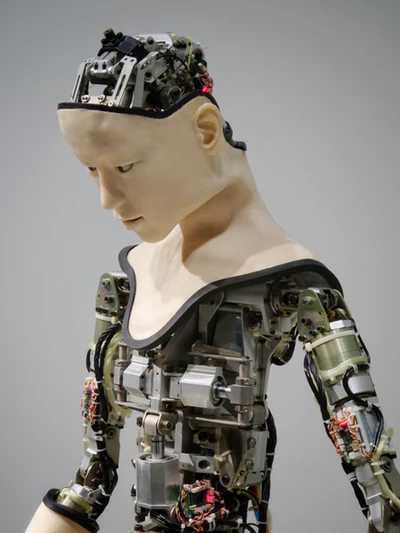
AI can digitize millions of archival photographs
How to spare valuable old paper photographs? The New York Times worked together with Google Cloud to utilize AI to digitize 5-7 million recorded photographs since the nineteenth century. Google Cloud’s AI innovation digitizes photographs, as well as outputs photographs on photographs and classifies semantic data, for example, area and date.
The old paper photographs record the valuable snapshots of the time, and the verifiable centrality is more essential, however the paper is to a great degree simple to harm. By what means should people safeguard them and given them a chance to keep going forever?
Google Cloud utilizes AI to digitize photographs.
In the storm cellar of the New York Times office close to the Times Square office in the United States, around 5 million to 7 million old photographs were put away. Where these photographs exist is known as the information file.
The New York Times stores these photographs, as well as stores data about when they were discharged and why they were discharged. Presently, the daily paper is working with Google Cloud to digitize its enormous accumulation.
Google Cloud formally posted a blog saying that it will work with the New York Times to digitize an immense accumulation of photographs, utilizing devices from Google Cloud to help the New York Times safely store photographs, give a superior interface to discover photographs, and even photographs. The numbers behind it to get more data in the photograph.
Paper is short-lived and secures valuable visual legacy through AI
“Photographs kept in the Archives go back to the finish of the nineteenth century, a large number of which have incredible verifiable esteem – numerous photographs are not found anyplace else on the planet. In 2015, a broken pipeline suffocated the documents and made the whole gathering At the hazard. Luckily, there was just minor harm at the time, yet this episode started reflection: in what manner should these most profitable physical resources be put away safely?
The New York Times Information Archive
“The Data Archive is a fortune trove of short-lived reports, not just the historical backdrop of the New York Times, yet additionally the significant annal of worldwide occasions that have impacted our cutting edge society for over a century.” New Chief Technology Officer of The New York Times Nick Rockwell said.
Not exclusively does the picture of the photograph contain profitable data. Much of the time, the back of the photograph incorporates when and where the photograph was taken.
To secure this inestimable history and permit the New York Times to upgrade its inclusion through more visual accounts and chronicled foundations, The New York Times is digitizing its files and utilizing Google Cloud to store all pictures in the information file. High goals check.
Google Cloud is a framework for putting away questions that gives robotized lifecycle administration, stockpiling for various zones, and simple to-utilize administration interfaces and A PI for clients, for example, the New York Times .
How AI functions: Technology in Google Cloud can process and distinguish a lot of data in photographs
Essentially putting away high-goals pictures isn’t sufficient to make a framework that photograph supervisors can without much of a stretch utilize.
A viable resource administration framework must enable clients to effortlessly peruse and look for photographs. The New York Times has made a preparing framework for putting away and handling photographs, and will utilize the innovation in Google Cloud to process and recognize content, penmanship, and different subtle elements found in pictures.
Here’s the means by which it works:
In the wake of removing pictures into distributed storage, The New York Times utilizes Cloud Pub/Sub to start handling of transmission ways to achieve different undertakings. The picture measure is resized by an administration running on Google Kuberne te s Engine (GKE), which is put away in a PostgreSQL database running in Google’s completely overseen database item, Cloud SQL.
Cloud Pub/Sub helps the New York Times make its procedure without building complex APIs or business process frameworks. It’s a completely overseen arrangement, so there’s no opportunity to keep up the fundamental foundation.
Google Cloud formally discharged a video with the “New York Times” to digitize the photographs, telling the working rule of AI
To change picture measure and adjust picture metadata, The New York Times utilizes the open source order line programs “ImageMagick” and “ExifTool”. They added ImageMagick and exiftool to the Docker picture to run them on GKE with negligible managerial exertion and an on a level plane adaptable methodology. It’s not vital to add greater ability to process more pictures. The New York Times can stop or begin its Kubernetes bunch when administrations are not required. These pictures are likewise put away in basins made in a multi-zone area of distributed storage to give accessibility in numerous areas.
The last piece of the document is to track pictures and their metadata as they travel through the New York Times administration framework. Cloud SQL is a decent decision. For designers, Cloud SQL gives a standard PostgreSQL occurrence: as a completely overseen benefit, there is no compelling reason to put in new forms, apply security fixes, or set up complex setups. Cloud SQL gives engineers a simple method to utilize standard SQL arrangements.
Not simply putting away pictures, machine learning can get a considerable measure of data on photographs Putting away pictures is just piece of this story.
With the end goal to make the picture of the New York Times information file more advantageous, it is useful to utilize extra GCP capacities. On account of The New York Times, the greater test in checking photographs is to include content information about old photographs. The Cloud Vision API can help fill this hole.
Google Cloud: Bring the past to the future and make all the data accessible
This is only the start. Organizations like The New York Times can utilize the Vision API to distinguish protests, places, and pictures. For instance, in the event that we pass the highly contrasting photograph above by means of the Cloud Vision API with logo identification, we can see that the Penn Station is perceived.
Google Cloud’s regular dialect API can be utilized to add extra semantic data to perceived content. For instance, in the event that we pass the API, pass the content “The Way of the New York Times – swarmed Penn Station in 1942, a time of fearless flight just – Washington, Miami and different stations.” Correctly put “Pennsylvania Station” “Washington” and “Miami” are recognized as areas and the whole sentence is named the “Travel” classification and the sub-class “Transport and Railroad”.
Google Cloud guarantees in its blog that helping the New York Times change its photograph chronicles is in accordance with Google’s central goal to arrange data worldwide and make it generally accessible and valuable.



